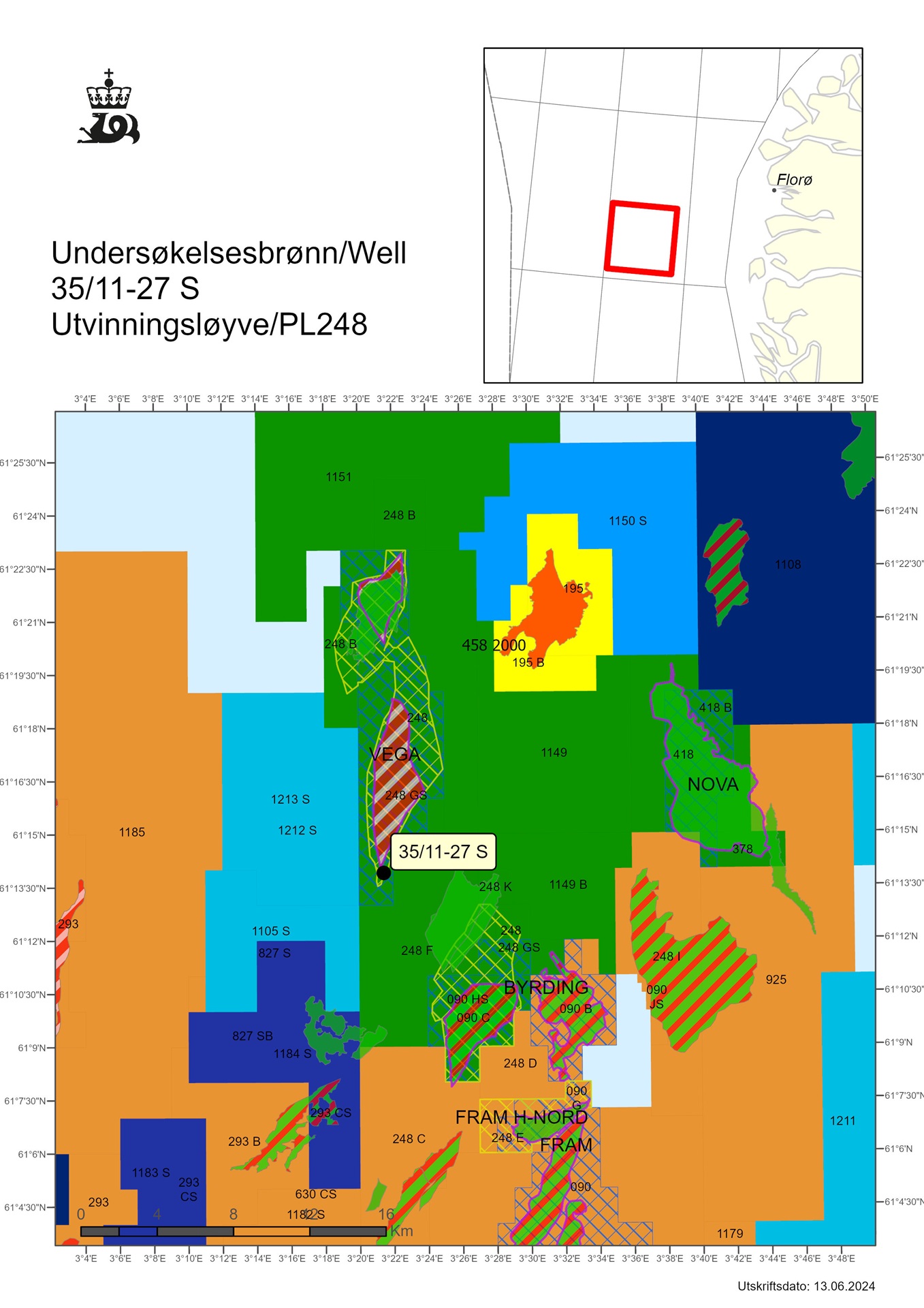Gas and condensate discovery in the North Sea (35/11-27 S)

The Transocean Norge rig drilled the well. (Photo: Transocean)
6/19/2024 Wintershall Dea has made a discovery of gas, condensate and oil in well 35/11-27 S in the North Sea, 100 kilometres southwest of Florø.
The “Cuvette” discovery was made in production licence 248, which was awarded in 1999.
The well resulted in discoveries in four different formations.
The preliminary estimate of the size of the discovery in the Tarbert and Upper Ness formations is between 1.5 - 3.5 million standard cubic metres of recoverable oil equivalent (Sm3 o.e.). This corresponds to 9 - 22 million barrels of oil equivalent.
The preliminary estimate of the size of the discovery in the Upper Jurassic is between 1.1 – 2.6 million Sm3 o.e.. This corresponds to between 7 - 16 million barrels of oil equivalent.
An additional interval in the Upper Jurassic was also encountered during the drilling operation.
An oil zone was also encountered in the Etive Formation. As of now, there is no preliminary volume estimate here.
The Transocean Norge rig drilled the well, three kilometres south of the Vega field.
The licensees are considering tying the field back to existing infrastructure in the area.
Geological information
The primary exploration target for the well was to prove petroleum in Middle Jurassic reservoir rocks in the Tarbert and Upper Ness formations.
The secondary exploration target was to prove petroleum in sandstones from the Upper Jurassic.
Well 35/11-27 S encountered a gas/condensate column totalling 55 metres in the Tarbert and Upper Ness formations, around 29 metres of which was sandstones of moderate to poor reservoir quality. The gas/water contact was not encountered.
The well also proved a 5-metre oil column in the Etive Formation in the Middle Jurassic, 4 metres of which consist of sandstones with poor to moderate reservoir quality. The oil/water contact was encountered 3843 metres below sea level.
In the secondary exploration target in the Upper Jurassic, the well encountered two petroleum-bearing sandstone intervals. In the uppermost interval, the gas/condensate column is 8 metres, of which 5 metres consist of sandstones with poor reservoir properties. The gas/water contact was not encountered.
In the lowermost interval, a gas/condensate column totalling 16 metres was encountered, of which 14 metres in sandstones with poor to moderate reservoir quality. The hydrocarbon/water contact was encountered at 3327 metres below sea level.
The well was not formation-tested, but extensive data acquisition and sampling have been conducted.
Well 35/11-27 S was drilled to a vertical depth of 3986 metres below sea level and was terminated in the Rannoch Formation in the Middle Jurassic.
Water depth at the site is 378 metres. The well will now be permanently plugged and abandoned.

Director Communication, public affairs and emergency response
Updated: 6/27/2024